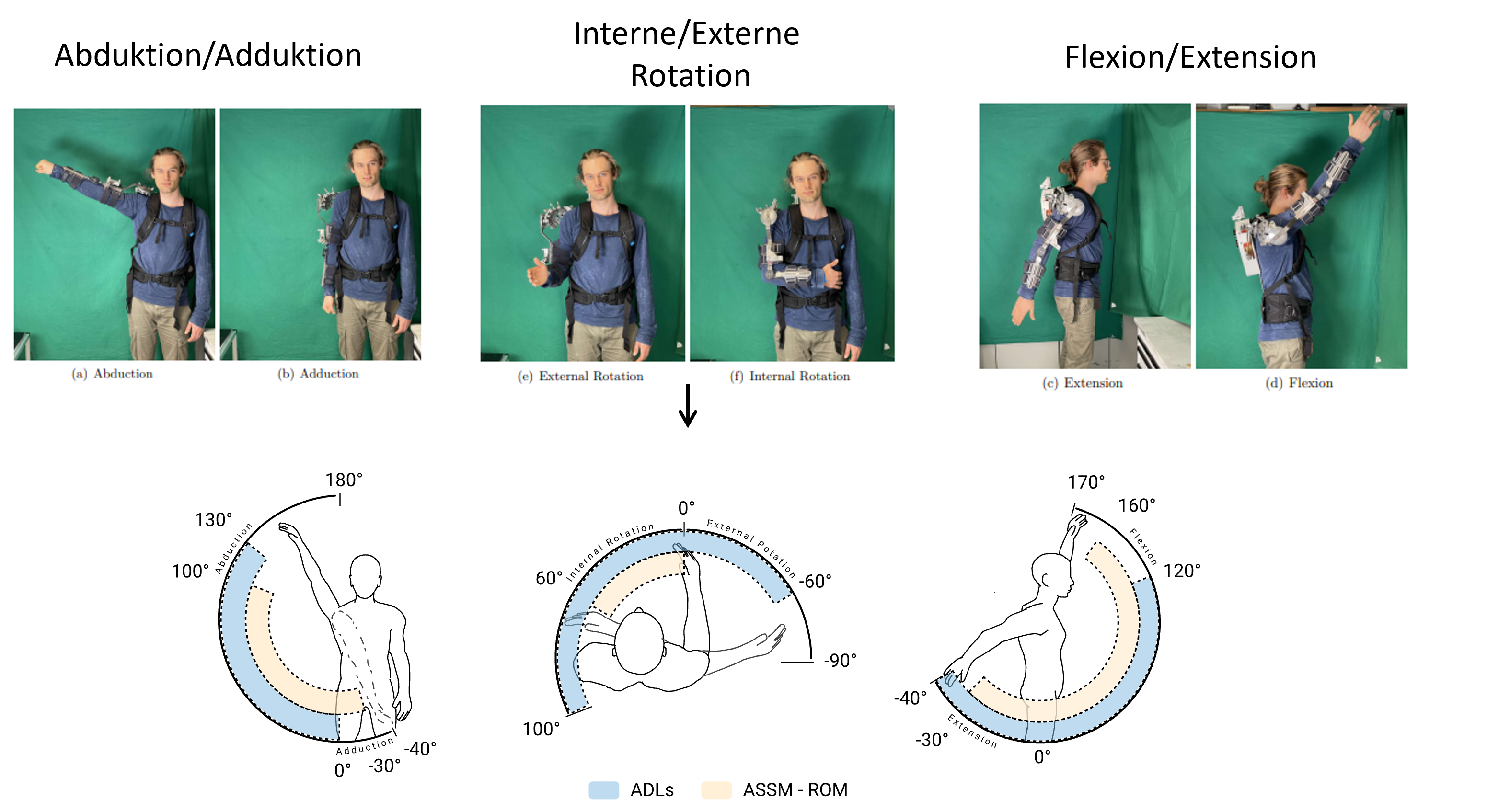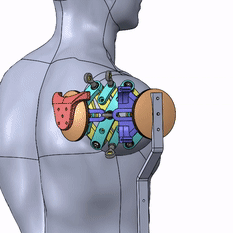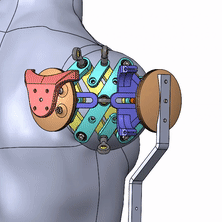Wearable Compact Shoulder Exoskeleton
In the realm of biomedical engineering, my Master’s thesis at the Technical University of Munich’s Institute of Micro Technology and Medical Device Technology (MiMed) introduces a novel approach to shoulder rehabilitation through the development of the Actuated Scissor Shoulder Mechanism Exoskeleton (ASSM-EXO). This project contributtes to the development in the field of mobile exoskeletions, focusing on the design and evaluation of a compact, wearable device intended to aid in the recovery of individuals experiencing shoulder mobility impairments, particularly following stroke-related hemiparesis.

Overview of the Shoulder Exoskeleton
Addressing a Critical Need
The motivation for this thesis arises from the increasing prevalence of stroke cases worldwide, which often result in long-term disabilities such as hemiparesis. With a growing demand for rehabilitation services and a notable shortage of physiotherapy resources, the ASSM-EXO aims to provide a complementary solution that enables patients to perform more frequent and targeted rehabilitation exercises, potentially improving recovery outcomes.
Conceptual Foundation
The cornerstone of this Master’s thesis is an innovative Actuated Scissor Shoulder Mechanism, distinguished by its unique design that avoids singularities, provides high stiffness, and supports a wide range of shoulder movements. Constructed with lightweight aluminum, the ASSM-EXO is engineered to mimic the natural movements of the human body, thereby offering users both functional support and comfort.
The following animation shows movement of each linkage during the Abduction/Adduction, Internal/ External Rotation and Flexion/Extension.
To get a better understanding of the design of the mechanism the follwing figure shows an exploding view of the spherical mechanism where each layer is indicated by a unique color.

Exploding view of the ASSM
Technical Achievements
A key innovation of the ASSM-EXO is its actuation system, powered by a Bowden cable and driven by motors located within a specially designed backpack. This strategic design significantly reduces the device’s weight impact on the user’s extremities, promoting enhanced comfort and ease of use. Weighing approximately 1.42 kg on the extremities, this aspect of the thesis underscores the project’s commitment to developing user-centric rehabilitation technologies.
Research Insights
Initial testing and research conducted as part of this Master’s thesis have yielded encouraging results, demonstrating the ASSM-EXO’s potential to reduce muscle activity by 50% during use while achiving high mobilie and range of motion.
In summary, an exoskeleton was developed which:
- Fully actuates the SSM mechanism -> ASSM
- Close to the body (distance to the centre of the shoulder only 122 mm)
- Reduces muscle activity by up to 50 % (comparable with current systems)
- High comfort even with high forces
The final range of motion of the decive was evaluated and can be seen the the figure below.

Range of Motion with and without the ASSM
Future Perspectives
The development of actuated exoskeletons like the ASSM-EXO invariably involves balancing comfort, safety, and functionality. Each design decision impacts these factors differently, highlighting the complex interplay between reducing weight, ensuring stability, and maintaining a user-friendly design. As such, future work in this field must continue to address these challenges, exploring new materials, designs, and technologies that can bring us closer to achieving an optimal balance.
The journey of the ASSM-EXO from a concept to a functional prototype underscores the dynamic challenges and opportunities within the field of rehabilitative device development. It was a great challenge and learning experience that MiMed offered me. Special thanks go to my supervisors on this project, which helped signaifically on the technical and conceptual problems.
 My Blog
My Blog

